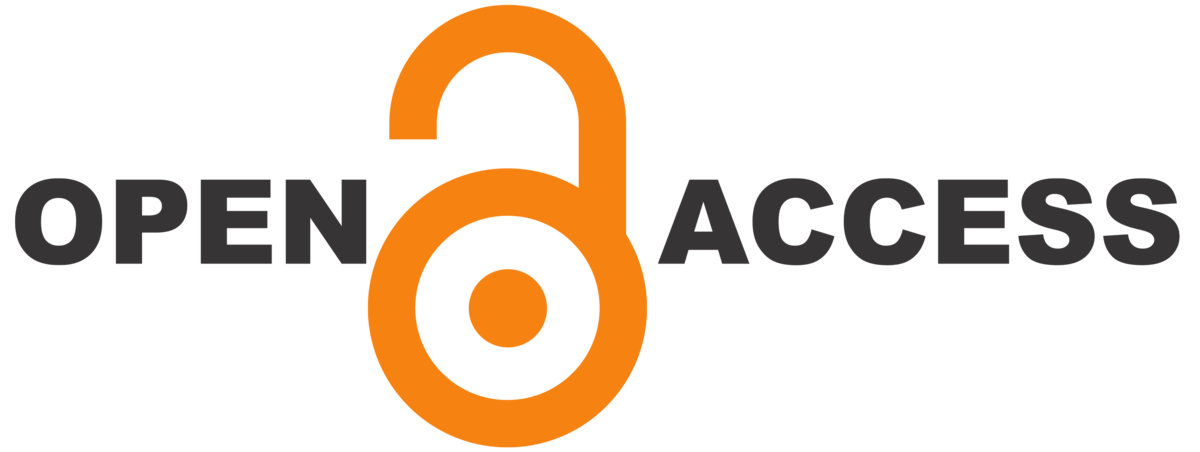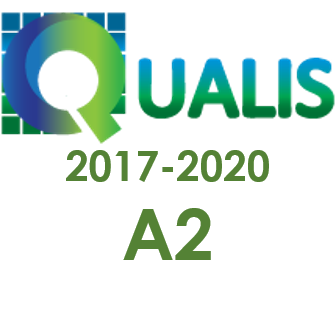EDUCATING FOR SOCIAL JUSTICE IN A POST-DIGITAL ERA
DOI:
https://doi.org/10.22481/praxisedu.v16i39.6374Palavras-chave:
Educação, Justiça social, Era pós-digitalResumo
Este artigo discute a educação para a justiça social na era pós-digital. Hoje em dia, sentimentos comuns de desencanto e ceticismo com a tecnologia são expressos pelas escolhas dos professores em usar ou dispensar tecnologias avançadas em suas salas de aula, seja porque não têm acesso a elas ou porque não foram ensinados (nem mesmo treinados) para fazê-lo. Do lado dos alunos, pós-verdade e desinformação têm obscurecido a maneira como os conteúdos e suas relações com o mundo precisam ser considerados. Definimos educação para a justiça social, a partir dos estudos significativos e substanciais da área (FREIRE, 1974/2010; MCDONALD, 2005, 2007, MCDONALD E ZEICHNER, 2009; LEONARD ET AL, 2010; AGARVAL ET AL, 2010; DE OLIVEIRA, 2013). Também aprofundamos concepções que consideramos essenciais para enfrentar os problemas da era pós-digital: (i) atenção ao neoliberalismo e seus impactos na educação para a justiça social (HURSH, 2005; COCHRAN-SMITH ET AL, 2009; SLEETER, 2009 ; MILNER, 2010); (ii) atenção à raça, racismo e uma reivindicação por educação anti-opressora (LADSON-BILLINGS E TATE, 1995; KUMASHIRO, 2000, 2001; BANKS, 2001; RICHERT ET AL, 2009; YOUNG, 2010; SLEETER, 2017). Nossas conclusões são direcionadas à era pós-digital, quando o acesso a dados e às mais recentes tecnologias permanecem limitados àqueles em posições de poder. O professor e os educadores podem se envolver na criação de ambientes que incentivem a exposição a perspectivas que incluam grupos marginalizados e permitam uma maior compreensão de uma variedade de etnias, culturas, origens socioeconômicas e orientações sexuais.
Downloads
Referências
Agarwal et al. (2010). From ideal to practice and back again: Beginning teachers teaching for social justice. Journal of Teacher Education, 61(3), 237–247.
Banks, J. A. (2001). Citizenship Education and Diversity: Implications for Teacher Education. Journal of Teacher Education, 52(1), 5–16.
Banks, C.A.; Banks, J. (1995). Equity pedagogy: an essential component of multicultural education. Culturally relevant teaching. Summer, (34), 3, 152-158.
Bell, D. (1987). And we are not saved: the elusive quest for racial justice. New York: Basic Books.
Berlak, A.; Moyenda S. (2001). Taking it personally: racism in classroom from kindergarten to college. Chicago: The University of Chicago Press.
Bishop, A. J. (1990). Western mathematics: the secret weapon of cultural imperialism. Race & Class, 32(2), 51–65.
Boa Sorte, P. (2018). Remixes e expressão escrita em língua inglesa. In: Jordão, C. M.; Martinez, J.; Monte Mór, W. (Eds). Letramentos em prática na formação inicial de professores de inglês. Campinas: Pontes, 279-291.
Cascone, K. (2000). The aesthetics of failure: “post-digital” tendencies in contemporary computer music. Computer music journal, Winter, (24), 4, 12-18, Massachussets Institute of Technology.
Cochran-Smith, M. (2010). Toward a theory of teacher education for social justice. In A. Hargreaves et al. (Eds.), Second International Handbook of Educational Change (pp. 445-467). New York: Springer.
Cochran-Smith, M. et al. (2009). Teacher education for social justice: Critiquing the critiques. In W. Ayers, T. Quinn, & D. Stovall (Eds), Handbook of social justice in education (pp. 625-639). New York: Routledge.
Cramer, F. (2015). What is “post-digital”? In: Berry, D.; Dieter, M. (Eds). Post-digital aesthetics: art, computation and design. Palgrave, Macmillan.
Davis, F.J. (1991). Who is Black? One Nation's Definition. University Park, PA: Pennsylvania State University Press.
de Oliveira, L. C. (2013). Teacher education for social justice: perspectives and lessons learned. Charlotte. NC: Information Age Publishing.
Derman-Sparks, L.; Ramsay, P. G. (2006). What If All the Kids Are White? Anti-Bias Multicultural Education With Young Children and Families. New York: Teachers College Press.
Dyches, J., & Boyd, A. (2017). Foregrounding equity in teacher education: Toward a model of social justice pedagogical and content knowledge. Journal of Teacher Education, 68(5), 476-490.
Freedman, S et al. (1983). Teaching: An imperilled “profession”. In Shulman, L. S., Hr Sykes, G. (Eds.) Handbook of teaching and policy (pp. 261-299). New York/London: Longman.
Freire P. (1974/2010). Pedagogia do oprimido. São Paulo: Paz e Terra.
Gay, G. (2002). Preparing for culturally responsive teaching. Journal of Teacher Education, 53(2), 106-116.
Harding, S. (1993). The "Racial" Economy of Science. Bloomington: Indiana University Press.
Hursh, D. (2005). Neo-liberalism, markets and accountability: transforming education and undermining democracy in the United States and England. Policy futures in Education. (3), n.1, 2-15.
Janks, H. (2014). Doing critical literacy: texts and activities for students and teachers. New York: Routledge.
Kenway, J.; Willis, S. (1998). Answering back: girls, boys and feminism in schools. London & New York: Routledge.
Kumashiro, K. K. (2000). Towards a theory of anti-oppressive education. Review of Educational Research, 70(1), 25-53.
Kumashiro, K. K. (2001). "Posts’” perspectives on anti-oppressive education in social studies, English, mathematics, and science classrooms. Educational Researcher, 30(3), 3-12.
Lankshear, C.; Knobel, M. (2015). Remix, literacy and creativity: an analytic review of the research literature. Literacy Research Association Conference Symposium (4), 1-18.
Ladson-Billings, G., & Tate, W. F. (1995). Toward a critical race theory of education. Teachers College Record, 97, 47-68.
Lawrence, S. M. (1997) Beyond race awareness: White racial identity and multicultural teaching. Journal of Teacher Education, march-april, (48), 2, 1-8.
Leonard et al (2010). The nuances and complexities of teaching mathematics for cultural relevance and social justice. Journal of Teacher Education, 61(3), 261–270.
Leung, C.H.; Chang, Y.Y. (2003). Mobile learning: a new paradigm in electronic learning. Proceedings of the 3rd IEEE International Conference on Advanced Learning Technologies, 76-80. Los Alamitos. USA: IEEE.
McDonald, M. (2005). The integration of social justice in teacher education: Dimensions of prospective teachers’ opportunities to learn. Journal of Teacher Education, 56(5), 418-435.
McDonald, M. (2007). The joint enterprise of social justice teacher education. Teachers College Record, 109(8), 2047-2081.
McDonald, M. & Zeichner, K. (2009). Social justice teacher education. In W. Ayers, T. Quinn, & D. Stovall (Eds), Handbook of social justice in education (pp. 595-610). New York: Routledge.
McGee, E. O. (2016). Devalued Black and Latino Racial Identities: A By-Product of STEM College Culture? American Educational Research Journal, 53(6), 1626–1662.
Milner, H. R. (2010). What does teacher education have to do with teaching? Implications for diversity studies. Journal of Teacher Education, 61(1-2), 118–131.
Milner, H. R. (2008). Critical race theory and interest convergence as analytic tools in teacher education policies and practices. Journal of Teacher Education, 59(4), 332-346.
Murray, O. (2010). A mindfulness to transcend pre-service lip-service: A call for K-12 schools to invest in social justice education. Multicultural Education, 17(3), 48-50.
North, C. E. (2008). What is all this talk about “social justice”? Mapping the terrain of education’s latest catchphrase. Teachers College Record, 110(6), 1182–1206.
Richert, A. E et al. (2009). Preparing White teachers to teach in a racist nation: What do they need to know and be able to do. In W. Ayers, T. Quinn, & D. Stovall (Eds), Handbook of social justice in education (pp. 640-653). New York: Routledge.
Santaella, L. (2016). Temas e dilemas do pós-digital: a voz da política. São Paulo: Paulus.
Santaella, L. (2013). Comunicação ubíqua: representações na cultura e na educação. São Paulo: Paulus.
Solórzano, D. G.; Bernal, D. D. (2001). Examining Transformational Resistance Through a Critical Race and Latcrit Theory Framework: Chicana and Chicano Students in an Urban Context. Urban Education, 36(3), 308–342.
Solórzano, D. G.; Yosso, T. J. (2002). Critical Race Methodology: Counter-Storytelling as an Analytical Framework for Education Research. Qualitative Inquiry, 8(1), 23–44.
Scheffler, I. (1968). Science and subjectivity. British Journal for the Philosophy of Science, 19 (2): 176-177.
Schlindwein, A.F; Braga, D. B.; Boa Sorte, P. (2019). Ensino-aprendizagem de inglês com tecnologias: o caso da formação continuada para professores de inglês em Sergipe. In: Nascimento, A. K. O.; Zacchi, V.J. Formação docente em língua inglesa: diferentes perspectivas. Campinas: Mercado de Letras, 157-174.
Schniedewind, N.; Davidson, E. (2006). Open minds to equality: a sourcebook of learning activities to promote race, sex, class and age equity. Milwaukee. Rethinking Schools.
Sleeter, C. (2009). Teacher education, neoliberalism, and social justice. In W. Ayers, T. Quinn, & D. Stovall (Eds), Handbook of social justice in education (pp. 611-624). New York: Routledge.
Sleeter, C. (2017). Critical race theory and the Whiteness of teacher education. Urban Education, 52(2), 155-169.
Sturman, A. (1997). Case study methods. In: J. P. Keeves (Ed.). Educational research, methodology and measurement: an international handbook(2nd Ed.).Oxford: Pergamon, 61–66.
Tatum, B. D. (1992). Talking about race, learning about racism: the application of racial identity development theory in the classroom. Harvard Educational Review. (62), N. 1, Spring, 1-24.
Wright, H. K. (2000). Nailing Jell-O to the Wall: Pinpointing Aspects of State- of-the-Art Curriculum Theorizing. Educational Researcher, 29(5), 4–13.
Young, E. (2010). Challenges to conceptualizing and actualizing culturally relevant pedagogy: How viable is the theory in classroom practice? Journal of Teacher Education, 61(3), 248–260.
Zacchi, V. J. (2018). Literacies and digital gaming: negotiating meanings in English language teacher education. Revista Tempos e Espaços em Educação, (1), 11, 153-168.
Zeichner, Z. (2009). Teacher education and the struggle for social justice. New York: Routledge.
Downloads
Publicado
Edição
Seção
Licença
Você é livre para:
Compartilhar - copia e redistribui o material em qualquer meio ou formato; Adapte - remixe, transforme e construa a partir do material para qualquer propósito, mesmo comercialmente. Esta licença é aceitável para Obras Culturais Livres. O licenciante não pode revogar essas liberdades, desde que você siga os termos da licença.
Sob os seguintes termos:
Atribuição - você deve dar o crédito apropriado, fornecer um link para a licença e indicar se alguma alteração foi feita. Você pode fazer isso de qualquer maneira razoável, mas não de uma forma que sugira que você ou seu uso seja aprovado pelo licenciante.
Não há restrições adicionais - Você não pode aplicar termos legais ou medidas tecnológicas que restrinjam legalmente outros para fazer qualquer uso permitido pela licença.












